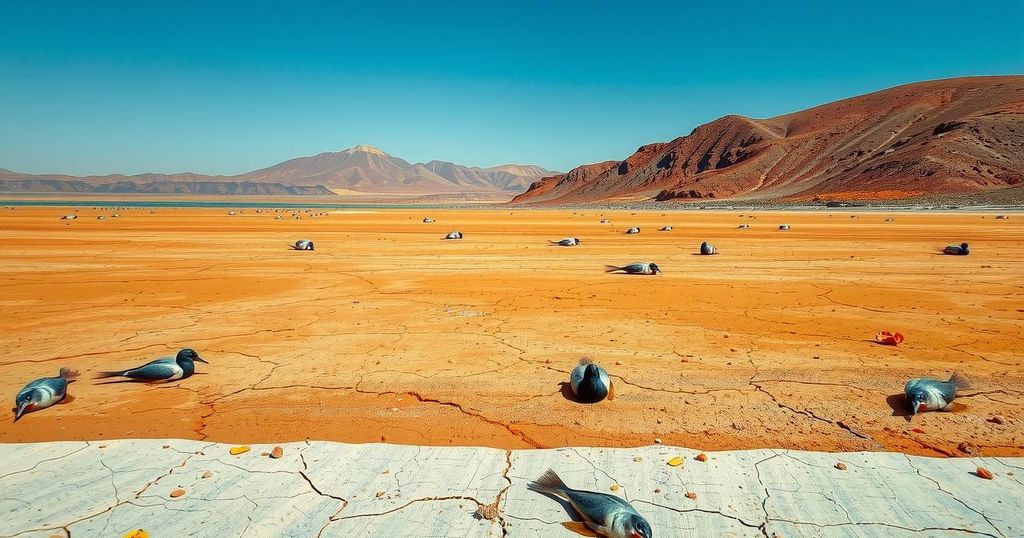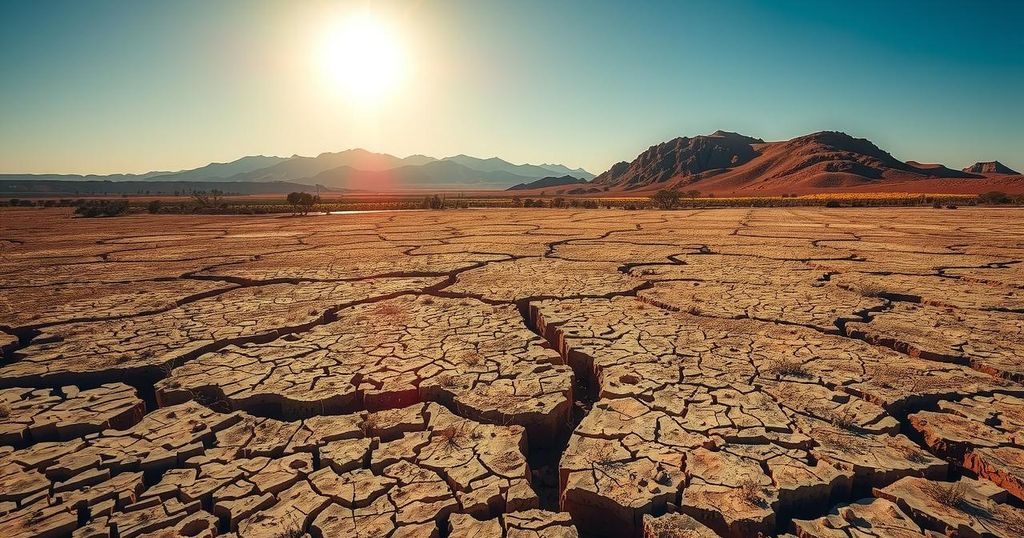Life in Kuwait City: Battling Extreme Heat and Climate Challenges
Kuwait City, the world’s hottest city, faces alarming heat exacerbated by global warming, with temperatures exceeding 50°C regularly. The environmental toll includes dropping birds and boiling fish. While the population adapts by remaining indoors, concerns grow for the significant migrant workforce facing health vulnerabilities. The government’s modest climate commitments contrast with rising energy demands and a pressing need for sustainable practices.
Kuwait City, recognized as the world’s hottest city, is increasingly facing extreme weather conditions, including reports of birds falling from the sky and fish boiling in the waters. Once a vibrant hub for sun-seekers and dubbed the “Marseilles of the Gulf” for its flourishing fishing industry, the city now grapples with intense heat surpassing even the hottest temperatures in Europe.
The temperatures can soar, exemplified by the record 54°C (129°F) recorded in Mitribah in 2016, now routinely exceeded during summer months. Projections suggest a rise of 5.5°C (10°F) by the end of this century, with exceptional heat events becoming the norm. In 2021, Kuwait experienced over 19 days of temperatures above 50°C, a significant rise signaling the impacts of global warming.
Consequently, Kuwait City’s infrastructure struggles with rising temperatures, rendering outdoor activities perilous. Scientific evidence points to an annual decrease in rainfall leading to more frequent dust storms. Notorious occurrences, such as birds succumbing to the heat and aquatic life suffering, highlight the severity of the situation.
Extreme temperatures pose serious threats to health, with risks of heat-related complications. This year, the Kuwaiti government introduced nighttime funerals in response to the incessant heat. Many residents now remain indoors within air-conditioned environments, prompting innovative infrastructure, such as an indoor shopping street designed as a respite from the heat.
Despite these oppressive conditions, Kuwait remains bustling with activity, largely due to the significant presence of migrant labor, comprising around 70% of the population. These workers face increased vulnerability to health challenges linked to extreme weather.
Global warming impacts are particularly stark in Kuwait, which has one of the highest carbon footprints per capita. Although Kuwait pledged modest targets for emission reductions, the expected surge in energy demand largely driven by air conditioning signifies an escalating climate crisis. Experts have warned of dire consequences, illustrating the myriad environmental challenges that the state may face if global warming continues unchecked.
Kuwait City, the world’s hottest city, is grappling with extreme weather that poses significant threats to both its inhabitants and environment. With soaring temperatures, reduced rainfall, and increased vulnerability for its migrant labor force, the nation faces dire climatic challenges. The need for sustainable practices and robust climate strategies is undeniable as the impacts of global warming become increasingly pronounced in this region.
Original Source: www.mirror.co.uk




Post Comment